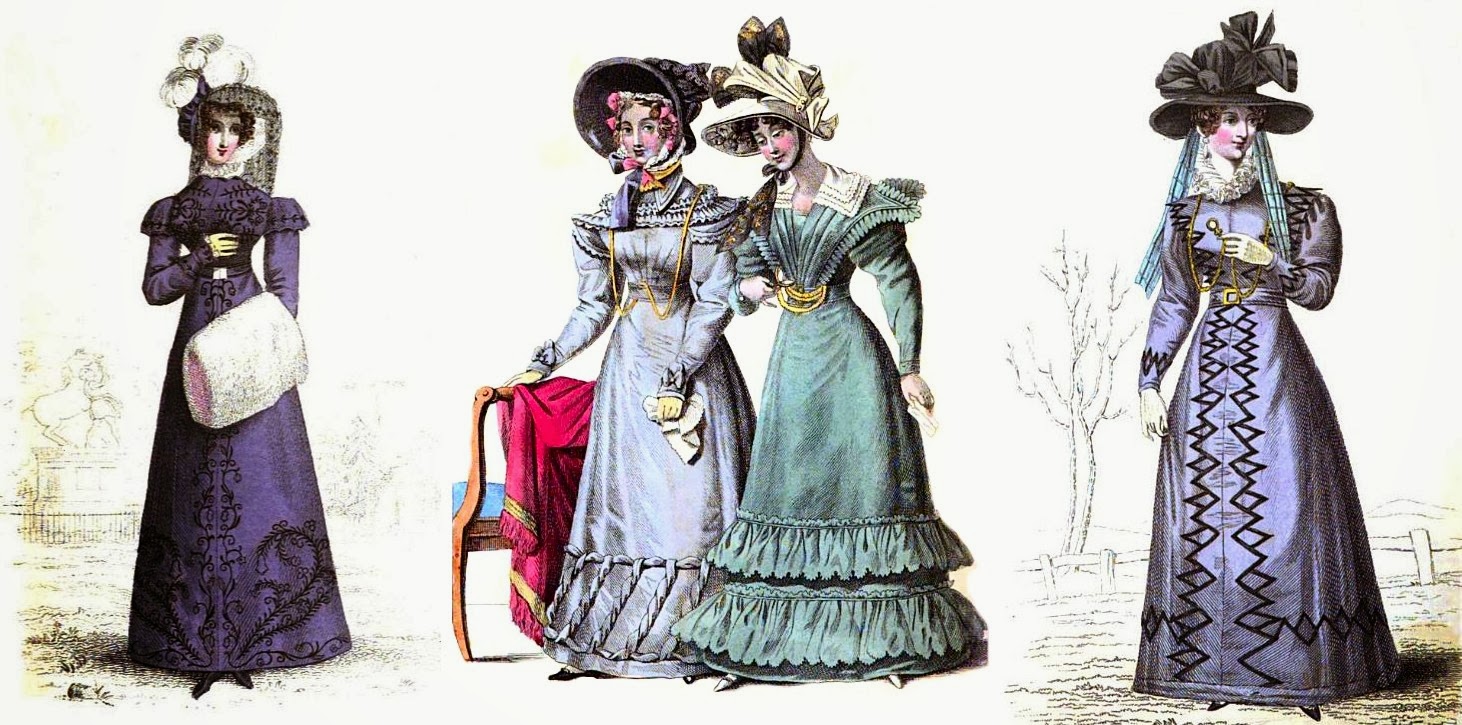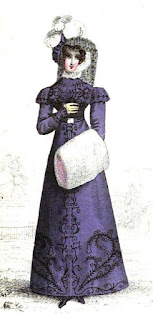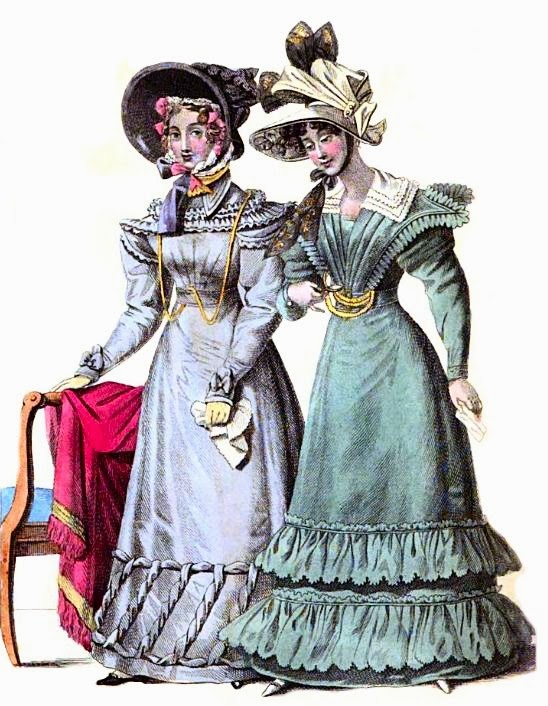 |
| Walking dresses in the reign of George IV from La Belle Assemblée (1823 and 1827) |
“The braided pelisses, which were but partially patronized on their first appearance, are now in high favour with those ladies of rank who may be said to lead the fashions, and we, this month, present a specimen of this most appropriate and elegant out-door envelope to our subscribers.”
 |
| Walking dress from La Belle Assemblée (Jan 1823) |
A belt of black velvet, fastened in front with a polished steel buckle, confines the pelisse round the waist. The bonnet is of puce colored velvet, lined with white satin, and crowned with a plume of white ostrich feathers: a veil of Chantilly lace is thrown carelessly across the brim of the bonnet, but this is not always adopted; the bonnet is of a charming shape and becoming size, to our ideas better without the veil, especially at this season of the year, though much depends on fancy. A single frill of the finest Mechlin lace is worn round the throat; a muff of the white Siberian fox, with half-boots of puce-colored kid, and light doe-skin gloves, finish this promenade dress, in which is combined richness, elegance and simplicity.”
Bombazine is a twilled or corded dress fabric that was originally made of silk or wool and silk.
There seems to be some variety in the actual shade of puce, but it is generally a dark purple or brownish purple colour.
"Mancherons" are small, short sleeves or ornamental trimmings on the upper part of the sleeve.
Spring 1827
 |
| Walking dress (left) and morning dress (right) from La Belle Assemblée (Jan 1827) |
“A high pelisse-dress of slate-coloured gros de Naples, with a broad border, formed of twisted rouleaux, set on in bias stripes at separate distances, and confined above and beneath under a rouleau, which two rouleaux cross the skirt, and complete the border; the sleeves loose, with mancherons formed of double scallops trimmed round with quilling of gros de naples, pinked. A pelerine cape, the same as the dress, fastens behind, and is finished by a narrow falling collar of the same; above which is tied round the throat a pink silk sautoir. Under a plain black velvet bonnet is worn a cornette of British lace, ornamented with full-blown roses.”
"Gros de Naples" is a heavy silk with a dull finish.
"Rouleaux" are rolls or coils of ribbon or other material.
A quilling is a piece of quilled lace or other fabric used as a trim.
A pelerine cape is a lady's cape, often made of fur, but here made to match the dress, which tapers to long points in the front.
A sautoir is a long chain or beaded necklace, usually worn like a scarf, which was designed to imitate military braids or chains.
A cornette is a type of head covering. My research suggests that this was a type of wimple, usually made of starched white material, with long tails that could be tied up, left free or folded upwards to represent horns!
 |
| Walking dress from La Belle Assemblée (Mar 1827) |
Note the change in the shape of the sleeves and the increasingly large hats. I love the inclusion of the eye-glass as an accessory to the last outfit.
Sources used include:
Bell, John, La Belle Assemblée, various (1823, 1827)

I always fail to discover how far the people I'm researching followed fashion, and whether they adapted existing garments. That would tell me so much about their personalities.
ReplyDeleteLove these posts
Charlotte Frost @CharlotteFrost1
Thanks, Charlotte. I think there was probably a lot of adapting going on - clothes were expensive and had to be made over to look new, so it would only be the most wealthy that could buy new all the time.
Delete